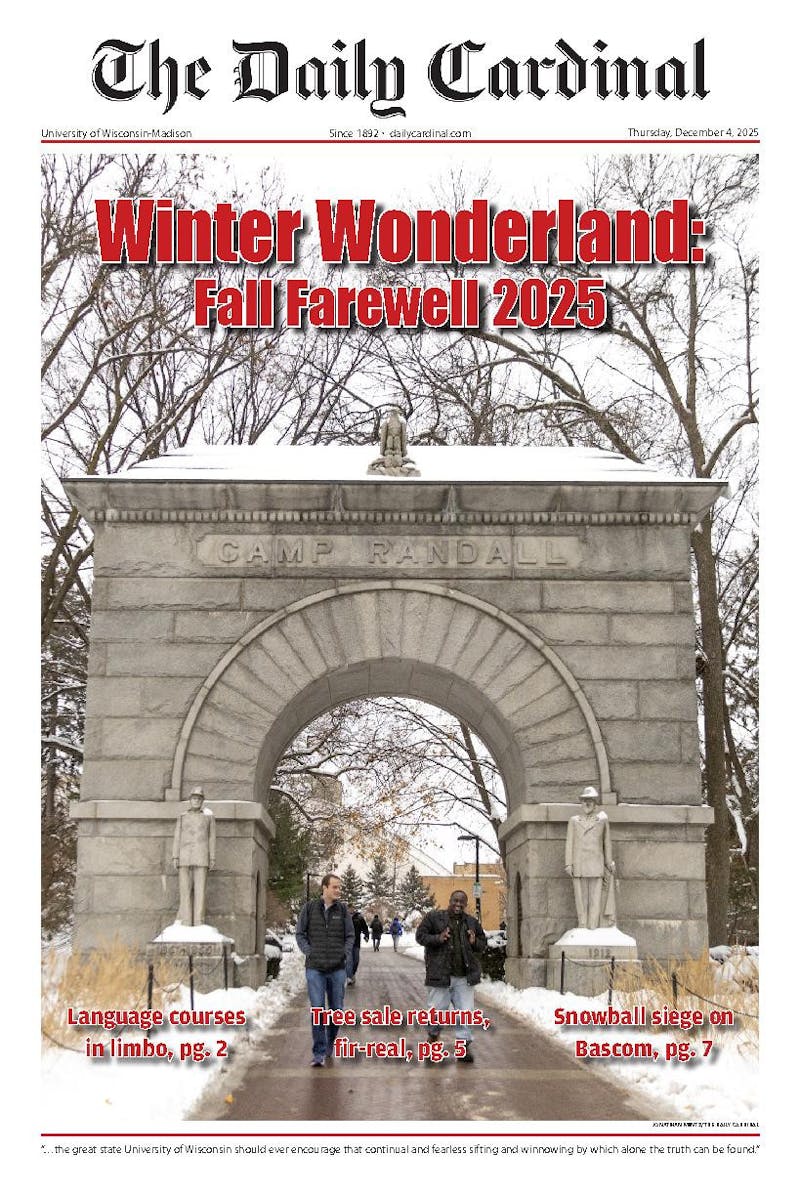This fall, Madison residents have an opportunity to protect their lakes. And they can start in their very own front yards.
Autumn leaf litter washes into street gutters and travels through the storm sewers that lead directly to local lakes. Once there, phosphorus from the leaves fertilizes algae and produces algae blooms that offend the eye and nose, and can be toxic. Local agencies and activists urge Madisonians to manage leaves on their lawns to keep them out of the lakes.
\The nutrients that are in the leaves leach out and fertilize the whole lake system,"" said Richard Lathrop, a Department of Natural Resources limnologist and honorary fellow in UW-Madison's Center for Limnology, which focuses on the study of bodies of freshwater.
The decaying debris causes massive algae blooms, bursts of algae growth, that are ""noxious and unsightly,"" Lathrop said. Scum lines the shore and algae sit on the surface of a lake fertilized by phosphorus. But aesthetics are not the only concern. Some species of blue-green algae produce nerve and liver toxins.
""Two years ago, we had the first reported death of anybody in the United States occur in a golf course pond due to blue-green algal toxins,"" Lathrop said. Some dogs also had seizures, and one died last June after drinking water from Lake Kegonsa, he added.
The DNR and local health authorities are increasingly concerned about the toxic algae and are beginning to monitor the toxin levels to improve public awareness of health risks.
Up to 20 percent of the annual phosphorus load enters local lakes in the fall, according to Roger Bannerman, a DNR monitoring specialist who tracks down pollution sources.
""If we can reduce the amount of leaves going into the lake or the water going over the leaves when it rains, we can reduce that value,"" he said.
While rural areas comprise a large part of Lake Mendota's watershed, Lakes Monona and Wingra are embedded in urban areas. When leaves wash into the storm drains, ""the delivery system is very efficient,"" Bannerman said.
The experts agree: to prevent leaves from entering storm drains and subsequently the lakes, Madison residents must manage leaves at the source. Sue Jones, watershed management coordinator with the Dane County Lakes and Watershed Commission, suggested composting or mulching, or covering leaves to protect them from rainwater.
Madison residents can do their part to protect the lakes this fall.
""If everybody points the finger at someone else, we never make any progress,"" Lathrop said. ""Everyone should take responsibility for the overall problem. Otherwise we'll never get to a goal of cleaning these lakes up.""





